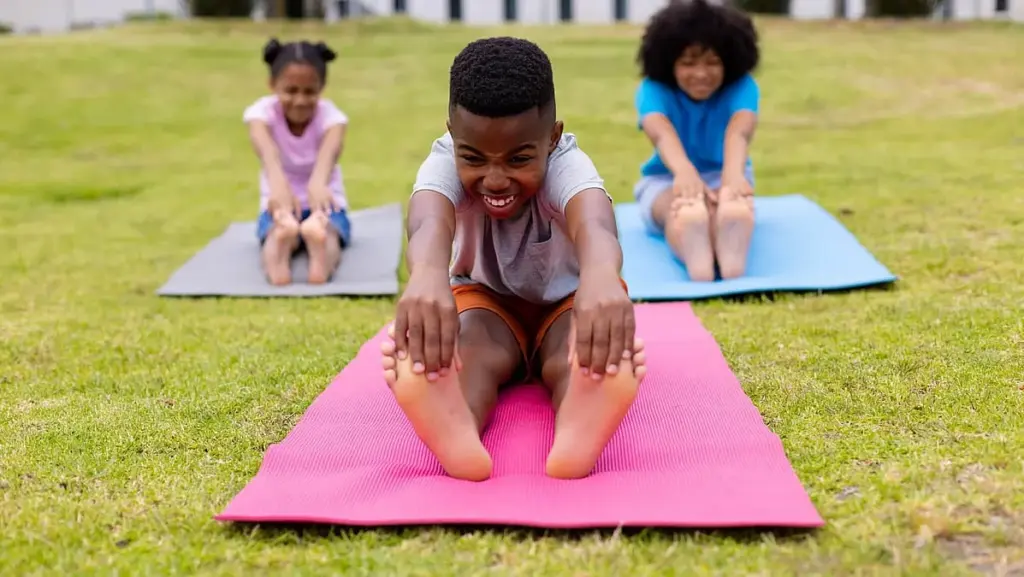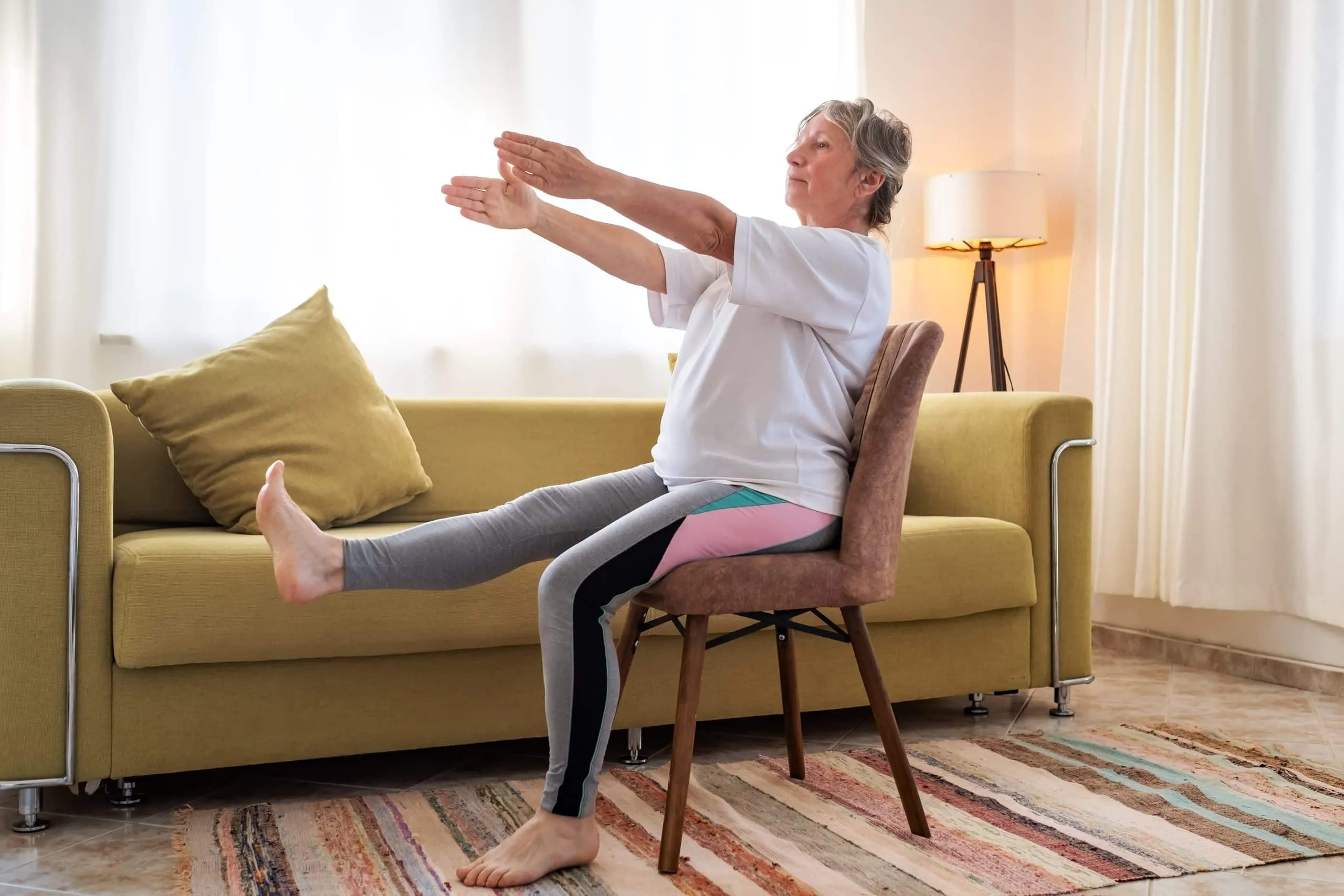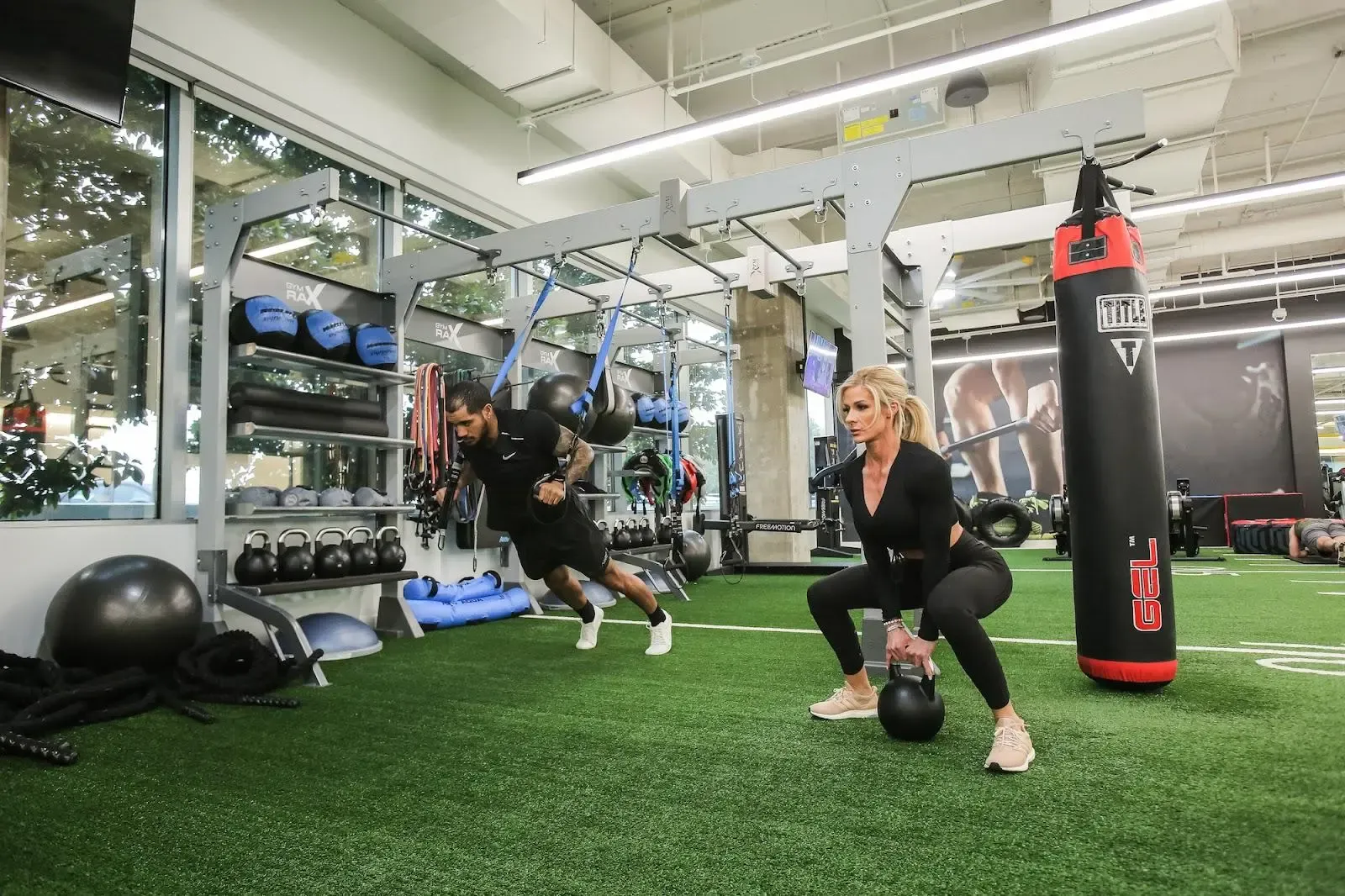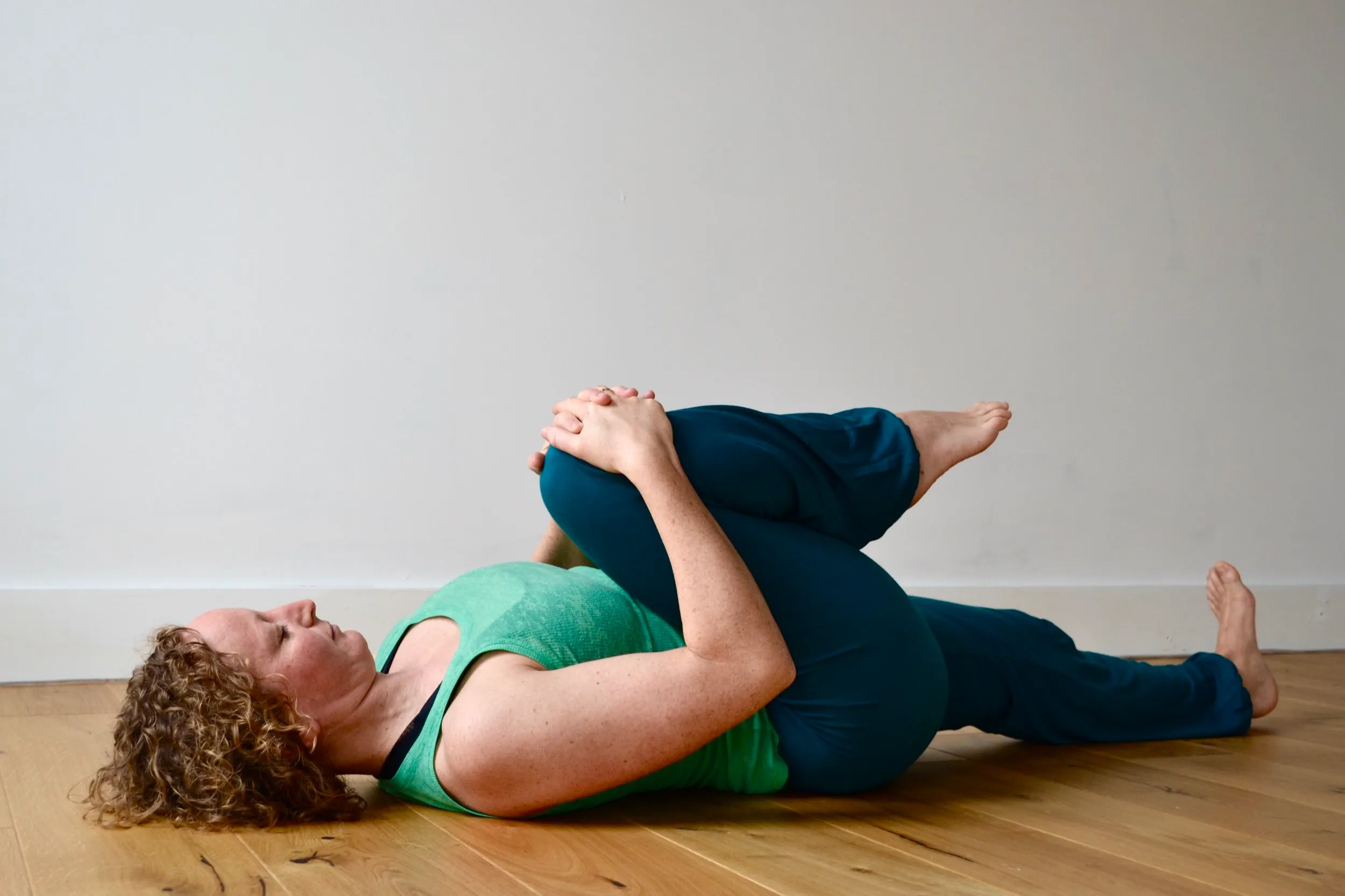Adults and children both can take full advantage of the excellent yoga practice. Many parents ask, “When should kids start doing yoga?” The answer lies in understanding the benefits, where and when to start teaching, and so on.
How Do You Understand Yoga For Kids?
Yoga for kids emphatically emphasises physical postures, breathing, and awareness. It’s fun and interesting. It can help kids become more resilient, balanced, and strong, along with better concentration and emotional control.
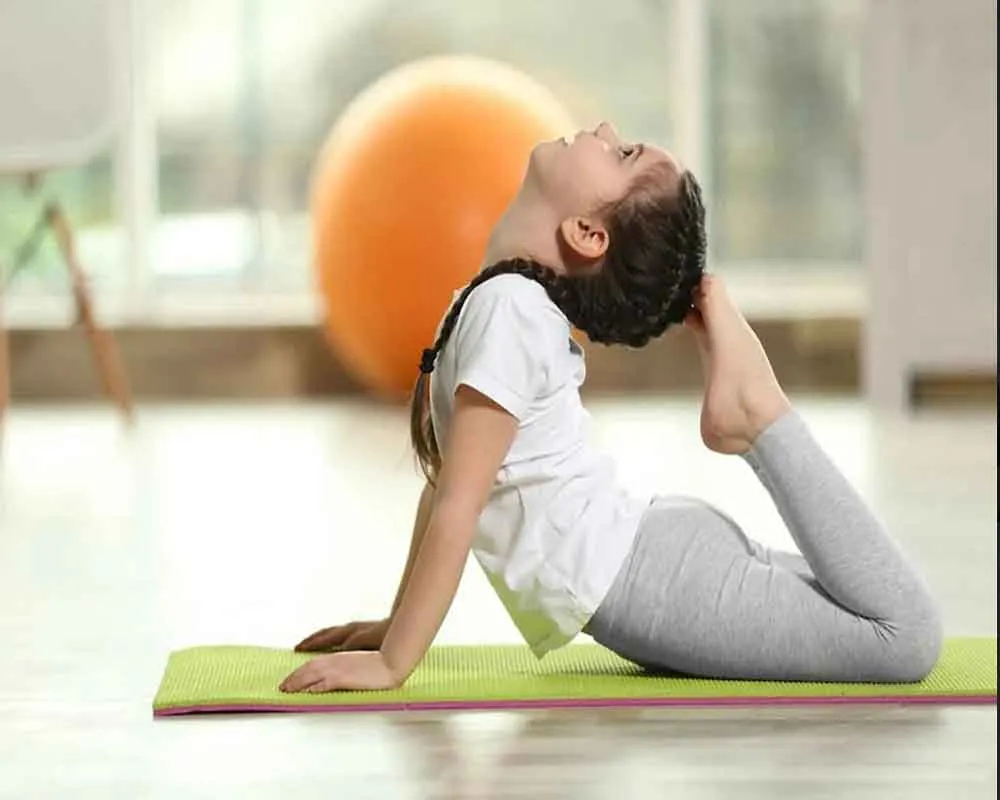
The Right Age for Kids to Practice Yoga
Although yoga might be helpful for children at almost any age, the majority of experts recommend beginning when the child is three or four years of age. The methods of predicting various ages are as follows:
3–4: A Motion Synopsis
Children of this age enjoy movement and are curious about nature. Yoga for children can introduce simple poses and movements in a fun way. It makes students interested in stories, games, and music. We encourage children to learn about their bodies because fun is more important than perfection.
Benefits:
• Builds fundamental motor skills
• Promotes body awareness and movement to spark creativity.
5–7 Years Old: Building a Foundation
As they grow, children can start practising more advanced poses and breathing regulation. Yoga classes in this age group usually focus on social skills and cooperation through partner poses and group projects.
Benefits:
• Increases awareness and focus
• Improves balance and coordination
• Promotes sociability and cooperation
8–12 Years Old: Developing Practice
Kids can learn the basics of yoga more easily at this age. They can be taught various breathing and meditation techniques. More structured elements can be taught in classes, including studying the philosophy of yoga.
Benefits:
• Improves self-esteem and confidence
• Learns to cope with stress
• Improves mental health
An Overview of Yoga for Children: A Guide for Parents
Here are some guidelines to help you get started if you are thinking of teaching your child yoga:
Choose the Right Class
Choose classes specifically for children. Children’s yoga classes must be taught by well-trained yoga professionals.
Make it Fun
Choose a session incorporating stories, games, and songs. Your child will be more interested if what they are doing is enjoyable.
Home Practice
Make your children practice yoga at home. You can install good yoga for kids in apps or view them online on videos. Practicing together strengthens their bond.
Praise Your Child
Praise your child for their effort and progress, however little, so that they become motivated. Praise them, and it will improve their success and yoga experience.
Encourage Mindfulness
Teach your kids breathing and mindfulness exercises. Deep breathing is a simple method they can use to manage their mood and stress.
The Advantages of Yoga for Children
Children can benefit immensely from yoga, so it’s a great addition to their routines. Some of the important advantages are:
1. Physical Well-Being
Strength, flexibility, and balance are all aspects of physical fitness that yoga enhances. They are also needed in most sports and physical activities. It also reduces the risk of injury and enhances posture.
2. Mental Health
Yoga enhances emotional regulation and self-awareness. Children learn to regulate their emotions and coping mechanisms. It can be particularly helpful in managing stress and anxiety.
3. Enhanced Concentration and Focus
Yoga enhances concentration and attention by conditioning one to become conscious. It may result in improved performance both in school and at home.
4. Social Skills
Interactive group exercises are a feature of most yoga sessions. Through good relations with fellow children, children’s social skills are enhanced.
5. Creativity and Imagination
The playful nature of yoga encourages one to be creative. Children can create and demonstrate their inner creativity through playing, storytelling, and movement.
Common Myths About Children’s Yoga
Parents are discouraged from getting their children to take yoga classes due to the numerous myths surrounding it. Keep the following in mind:
Yoga Is Only for Adults
The majority of people have the impression that yoga is only appropriate for adults. Yoga can be modified to suit all ages and is healthy for children.
Young Children Can’t Stay Focused for Long
Through yoga, kids can learn how to stay focused for a lot longer, albeit they have a shorter maintained focus than school-aged children. Children-centered courses incorporate participatory lessons to keep students engaged.
Yoga Is Too Challenging
Parents state that their kids cannot handle challenging yoga poses. On the other hand, amusing and age-related simple poses are a feature of kids’ classes.
Tips for Selecting the Best Children’s Yoga Class
Keep the following in consideration while searching for a yoga class for your child:
• Instructor Qualifications: Ensure that the instructor is teaching children yoga and knows the special requirements of young students.
• Class Size: Small classes offer extra attention and a more concentrated learning environment.
• Yoga Style: Various yoga styles will emphasise different elements of the practice. Search for classes that stress fun, creativity, and enjoying the process.
• Trial Classes: Most studios provide trial classes regularly. Utilise this to see if your child likes the teacher and the class.
Kids can learn yoga at any age, but the best age to start is when they are three or four years old. Yoga can teach children healthy patterns of physical exercise, mindfulness, and emotional balance at an early age.
Your child will have fun playing and learning yoga if properly supervised and cared for. Unroll the mat, breathe deeply, and have your child experience the great world of yoga!

